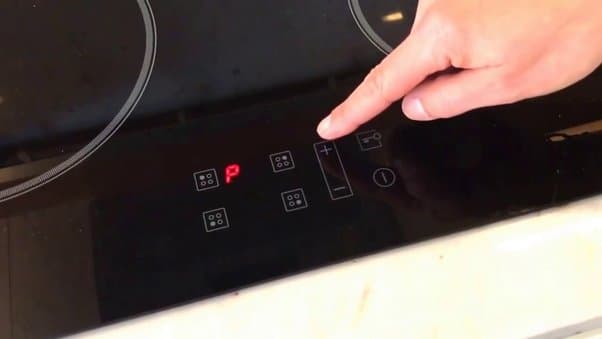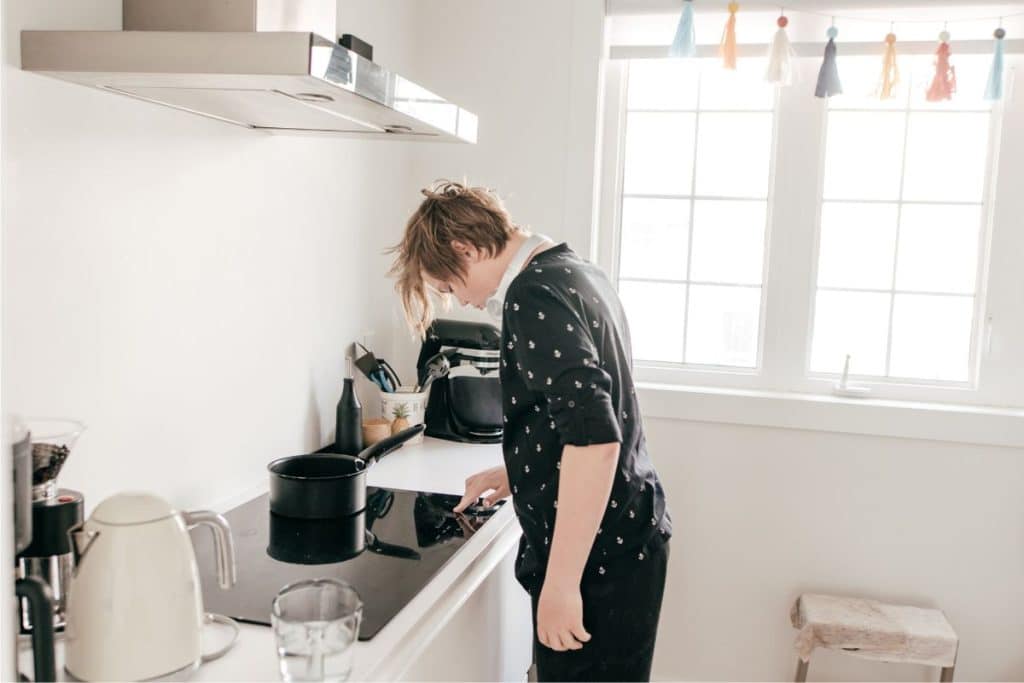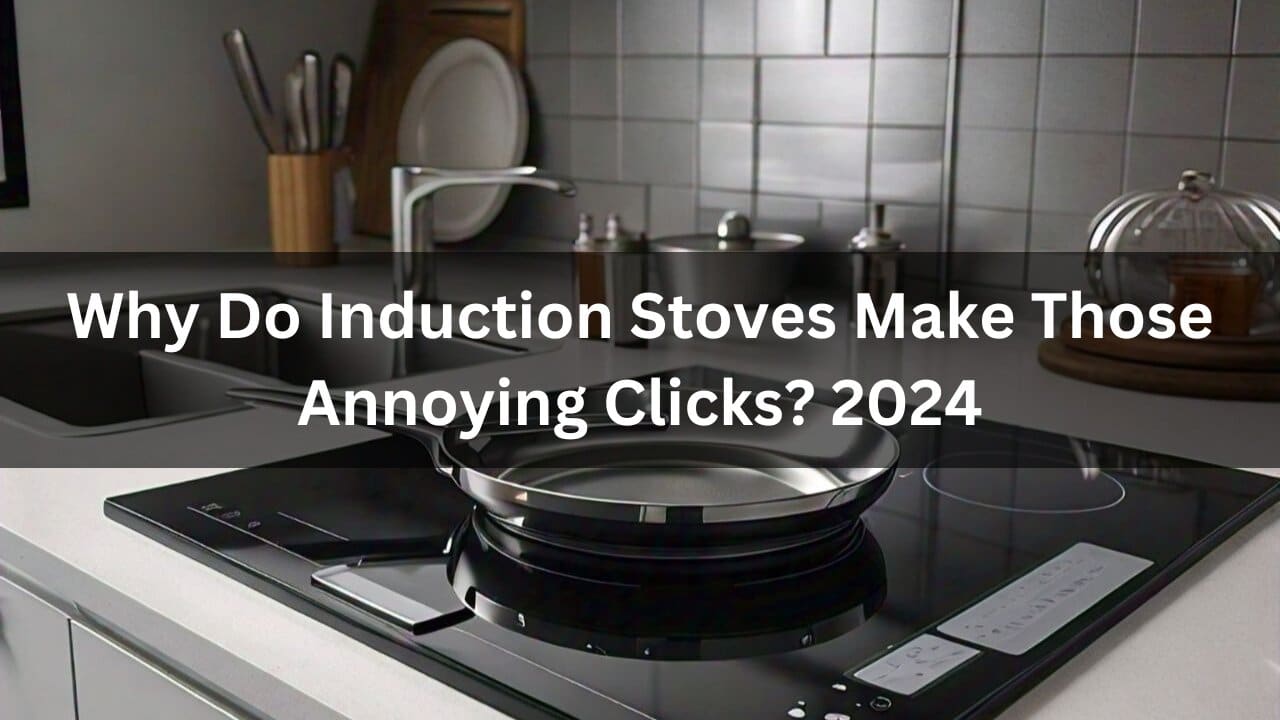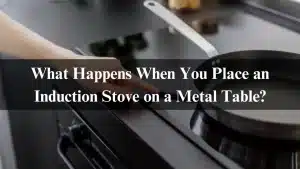Have you ever found yourself cooking a delicious meal on your induction stove, only to be interrupted by an unexpected clicking sound? It’s like the stove has its secret language—a series of clicks that can feel strangely out of place in your kitchen symphony. You’re not alone if you’re wondering why your induction cooktop makes those annoying sounds. Many home cooks experience this phenomenon, and it can raise questions about whether it’s normal or if something’s off with the appliance.
Induction stoves are known for their efficiency and precision, but they come with quirks that might catch you off guard. This post will delve into the reasons behind those pesky clicks and uncover what’s happening beneath the surface of your modern cooking technology. So, let’s turn down the heat of confusion and explore everything from the science behind induction cooking to ways you might silence those unwelcome noises once and for all!
Table of Contents
How do induction stoves work, including magnetic fields and heat generation?
Induction technology is a fascinating blend of physics and practical cooking. At its core, it relies on the principles of electromagnetism to generate heat.
When you place a pot or pan on an induction stove, the cooktop creates a magnetic field beneath it. This magnetic field induces an electric current within the cookware, producing heat directly in the metal.
Unlike traditional gas or electric stoves that rely on external heating elements, induction cooking heats only the vessel and not the surrounding air. This efficiency means faster cooking times and less energy wasted.

For this system to work effectively, your cookware must be ferrous—meaning it contains iron. Stainless steel and cast iron are excellent choices, while aluminum pans won’t work without a magnetic base.
This synergy between magnetism and heat generation makes induction stoves innovative and practical for modern kitchens.
Why Does My Induction Hob Make a Whistling Sound?
If your induction hob produces a whistling sound, it can be quite concerning. This noise often results from the interaction between the cookware and the cooktop itself.
When you place certain types of pots or pans on an induction surface, they might create vibrations that result in a whistling effect. Thin or lightweight materials are more prone to this phenomenon.
Another cause could be airflow issues around the cooktop. If the hob works hard to maintain temperature, air moving through vents may produce unexpected sounds.
It’s worth checking if your cookware is compatible with induction cooking. Some materials do not interact well with magnetic fields and can contribute to unusual noises during heating cycles.
Why Is My Induction Hob Buzzing, Pulsing, and Clicking?
You’re not alone if your induction hob buzzes, pulses, or clicks while cooking. Many users experience these sounds.
The buzzing often arises from the high-frequency magnetic fields used to generate heat. This sound can be particularly noticeable at higher power settings. It’s just a part of how induction technology functions.
Pulsing may occur when the stove detects changes in the cookware’s position or temperature. It adjusts its output accordingly, causing that rhythmic noise.

Clicking sounds might come from food coming into contact with hot surfaces or air pockets forming beneath pots and pans as they heat up.
These noises are generally harmless but annoying if you expect silence in your kitchen. Understanding these sounds helps ease concerns about their impact on performance or safety during cooking sessions.
Is It Bad if My Stove Is Clicking?
Hearing clicks from your induction stove can be unsettling. But is it a cause for concern? Generally, those clicks are part of the cooking process.
Induction cooktops use magnetic fields to create heat. Clicking can occur when the cookware interacts with these fields as the technology activates and deactivates. This is normal behavior for many models.
However, it might require attention if the clicking becomes excessive or isn’t linked to temperature changes. It could signal an issue with your cookware or even the appliance itself.
Always check that you’re using compatible pots and pans. Some materials may not work well with induction surfaces and generate unusual sounds during cooking.
If you’re unsure what’s causing those pesky sounds, consult your user manual or contact customer support for guidance on resolving potential issues without compromising performance.
How Do I Stop My Induction Cooktop from Making Noise?
Check the cookware to reduce the noise from your induction cooktop. Ensure that your pots and pans are compatible with induction technology. Using flat-bottomed, magnetic materials can minimize clicks.
Next, try to adjust the heat settings. Lowering the power level may decrease the frequency of those annoying sounds as it reduces energy fluctuations during cooking.
Keep an eye on placement, too. If you have multiple pots or large cookware in a single zone, consider spreading them across different zones for better balance and less noise.
Cleaning your cooktop can also make a difference. Food debris trapped between surfaces might amplify sounds while cooking. A quick wipe-down could solve this issue effectively.
If persistent noises continue despite these efforts, consult your user manual or contact customer support for further guidance tailored to your specific model.
How Do I Fix the Clicking, Buzzing, and Pulsing Sound on My Stove?
Addressing the clicking, buzzing, and pulsing sounds from your induction stove can be straightforward. Ensure your cookware is compatible with induction cooking; not all pots and pans will work seamlessly. If you hear clicks when moving cookware around, it could indicate an improper fit or material incompatibility.
Next, check for any loose components on the cooktop itself. Sometimes, items underneath the stove can cause vibrations, leading to noise. A gentle tightening of screws or repositioning of the unit may help eliminate some sounds.
If you’re still experiencing unwanted noises, consider adjusting the power settings. Many stoves have multiple intensity levels, which can affect sound output during operation. Lower settings might reduce those annoying clicks while maintaining effective cooking performance.

Should these steps fail to resolve issues persistently plaguing your appliance, consulting with a qualified technician is advisable. They can provide insight into potential hardware malfunctions or necessary repairs that may silence your stove’s disturbances.
By taking proactive measures and understanding how to troubleshoot effectively, you’ll soon be enjoying quieter cooking experiences.
Why Does My Induction Cooktop Make a Clicking Sound?
If your induction cooktop is clicking, it can be perplexing. This noise primarily stems from the rapid switching of the magnetic field that powers the stove. As you adjust heat settings, the appliance rapidly turns on and off to maintain precise temperatures, resulting in those characteristic clicks.
Another reason for this sound could be the interaction between your cookware and the burner. If you’re using pots or pans made from materials incompatible with induction cooking, improper contact with the heating element may cause additional noise.
Sometimes, air pockets trapped beneath cookware can also contribute to clicking noises as they expand and contract during heating. While these sounds might seem alarming initially, they are often just part of how induction technology operates efficiently.
What Causes the Clicking Noise?
The clicking noise from induction stoves typically originates from the rapid switching on and off the electromagnetic field. When you place a pot or pan on an induction surface, the stove activates its magnetic coils to generate heat. This process isn’t constant; it adjusts depending on the required temperature.
You’ll hear those clicks as you change settings or when cooking at lower temperatures. It’s essentially your cooktop communicating with you about energy modulation.
Another reason for this sound can be attributed to the materials used in cookware. Some pots may not sit perfectly flat, leading to vibrations that produce clicking sounds as they interact with the burner.
Even high-quality pans can create these noises if they’re lightweight or made from specific materials like aluminum. So, while it might seem alarming, those clicks are often just part of how your induction stove operates efficiently.
Troubleshooting and Fixing the Clicking Noise
If your induction stove makes those pesky clicks, troubleshooting can be straightforward. Start by checking the cookware you’re using. For optimal performance, it should be magnetic and flat-bottomed. If it’s not, that may explain the noise.
Next, inspect the cooktop surface. Debris or spills can sometimes interfere with heating elements and cause clicking sounds when they attempt to cycle on or off. A quick clean-up might do wonders.
Ensure that your pot or pan also fits snugly over the burner area. Loose-fitting cookware can lead to unwanted noises during cooking.
If these steps don’t resolve the issue, consider adjusting the heat settings. Lowering them may help stabilize energy flow and considerably reduce clicking noises.
Consult your stove’s manual for specific troubleshooting tips related to your model; a unique solution could be tailored just for you!
Alternative Methods for Cooking Without a Clicking Sound
If the clicking sound from your induction stove is driving you crazy, consider alternative cooking methods that offer peace.
One option is to switch to gas cooking. Gas stoves provide a consistent flame without electronic noise, allowing for a more traditional kitchen experience.
Electric coil cooktops are also an excellent choice. While they take longer to heat up than induction, their operation is silent and straightforward.
Countertop appliances like slow cookers or pressure cookers can save the day for those who enjoy versatility. These devices operate quietly while offering diverse cooking options, from stews to rice dishes.
Consider using a microwave for quick meals. It’s fast and nearly silent—perfect for busy days when you want minimal fuss in the kitchen.
Conclusion
Induction stoves are famous for their efficiency and speed. However, the clicking sounds can be distracting.
Understanding why these noises occur helps manage expectations. The technology behind induction cooking is fascinating, yet it has its quirks.
Many people appreciate induction cooktops despite the occasional clicks. These sounds often indicate that the stove is working correctly.
If you find the noise bothersome, there are ways to troubleshoot and reduce it. Experimenting with different cookware or adjusting your cooking techniques may offer some relief.
The benefits of using an induction stove far outweigh minor annoyances. With patience and understanding, you can enjoy all this modern cooking method offers.
Related Articles:
Which Induction Cooking Temperature is preferable? Info 2024
Is A 3500W Induction Burner An Overkill? Latest Info 2024
Do Induction Cooktops Get Hot Enough To Stir Fry Effectively?
Is An Induction Cooktop Supposed To Heat With Pauses?
Why Do Induction Stoves Work Poorly In Low-Power Settings? Info 2024
FAQs
1. Are clicking sounds from my induction stove a sign of a problem?
No, clicking sounds are usually normal and part of the stove’s operation. However, if the noises are unusually loud or persistent, it might be worth checking with a professional.
2. Can I reduce the clicking sounds without changing my cookware?
Adjusting the cooking settings and ensuring proper contact between the cookware and stove can help reduce clicking sounds.
3. Can I fix a clicking induction stove myself?
While some issues can be addressed with maintenance and adjustments, if the clicking is unusual or persistent, it’s best to consult a professional.
4. Do induction stoves make more noise than gas stoves?
Induction stoves can make different noises compared to gas stoves. While they might not make a flame-related noise, the electromagnetic operation can create clicking sounds.




